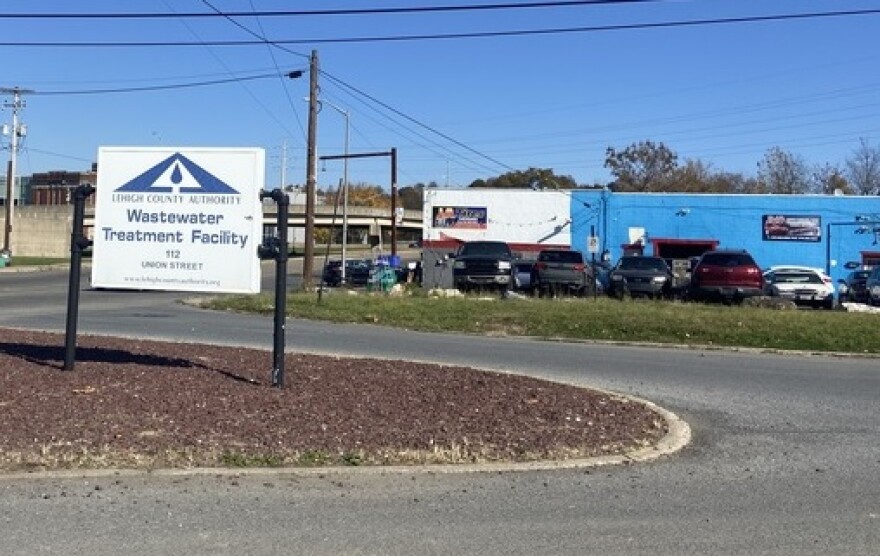ALLENTOWN, Pa. — Lehigh County Authority’s $300M regional wastewater plan on Tuesday passed a staff review by the Lehigh Valley Planning Commission’s Environment Committee.
The Kline’s Island Sewer System, or KISS, regional wastewater plan, “provide[s] a necessary path forward in preventing future sewage disposal problems from occurring and to provide protection for both the groundwater and surface waters of the region,” according to staff comments.
Committee members voted to approve the comments; Sunny Ghai abstained.

The KISS plan
LCA officials in November 2023 announced the more-than-half-billion-dollar plan for much needed upgrades to wastewater infrastructure across more than a dozen municipalities in its service area, including Allentown.
Overflow issues in the system stretch back to 2007, with additional overflows recorded in 2018 and 2019.
To remedy those issues, and address aging infrastructure, officials began working on a comprehensive, regional Act 537 plan.
Act 537 plans, required by all municipalities, “provide for the resolution of existing sewage disposal problems, provide for the future sewage disposal needs of new land development, and provide for future sewage disposal needs of the municipality,” according to the state Department of Environmental Protection website.
Approval of an Act 537 plan needs to happen at the local level before it’s reviewed and approved by the DEP.
Since the announcement, officials have held open houses to collect community input, as well as talks with area industry leaders.
From those collaborations, the plan changed, including a major decrease in cost and a slight shift in focus.
While the 10-year plan’s estimated cost now sits at $318 million, officials have prioritized the most-needed projects. For that, there’s a five-year plan, with a projected price tag of $135 million.
As of May, that plan has been submitted to local officials for review.
The plan will be further reviewed at a full meeting of the LVPC.
For now, the system seems to be holding up. Even with record-setting rainfall in May, there were no overflows.
“We kept the wastewater in the system this time,” Liesel M. Gross, chief executive officer of the nonprofit water and wastewater utility, said.
“So that's a good thing. We had no overflows or bypasses at the treatment plant, which is great.
“However, our average day flows for the month of May were about 4 million gallons per day higher than normal, because of … saturated soils because of all the rain.”
Hazard mitigation, climate action planning
Environmental committee members also unanimously passed a resolution to forward the Lehigh Valley Hazard Mitigation Plan to the full commission.
“Hazard mitigation planning reduces the long-term risk to life and property by minimizing the impact of disasters through identification of the risks and vulnerabilities of an area, then developing actions for protecting life and property from similar events,” Susan Myerov, the LVPC’s director of environmental planning, said.
The plans, required to receive federal hazard mitigation funding, must be updated every five years.

The updated plan was created by the emergency management officials in Lehigh and Northampton, Myerov said.
The committee in March of last year reviewed and accepted staff comments on the plan. FEMA in September granted the plan a “approved pending adoption” status.
It is now under local review for adoption by municipalities, as well as the LVPC.
Regional Climate Action Plan
Also during Tuesday's meeting, Environmental Planner Christian Martinez said staff have been working on a draft of the Regional Climate Action Plan.
“After receiving additional guidance from the U.S. EPA, the Environmental Protection Agency, we are in the process of developing a cost analysis element for the proposed policies in the plan,” Martinez said.
“This will examine potential costs and savings of implementing strategies in the plan so individuals, governments and companies can make informed financial decisions about climate strategies.”Lehigh Valley Planning Commission Environmental Planner Christian Martinez
“This will examine potential costs and savings of implementing strategies in the plan so individuals, governments and companies can make informed financial decisions about climate strategies.”
It is currently under editorial review and preliminary design, he said.
“A draft is anticipated to be provided to the committee later this summer, so the plan can be submitted to the EPA ahead of the December deadline,” he said.
Before the RCAP, the commission created the Priority Climate Action plan, focused on transportation decarbonization. It was released in February 2024.


